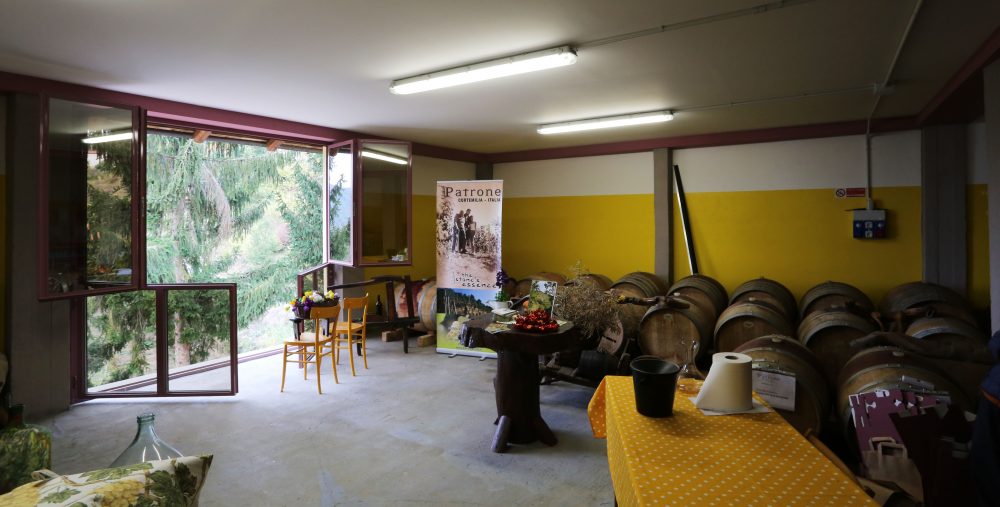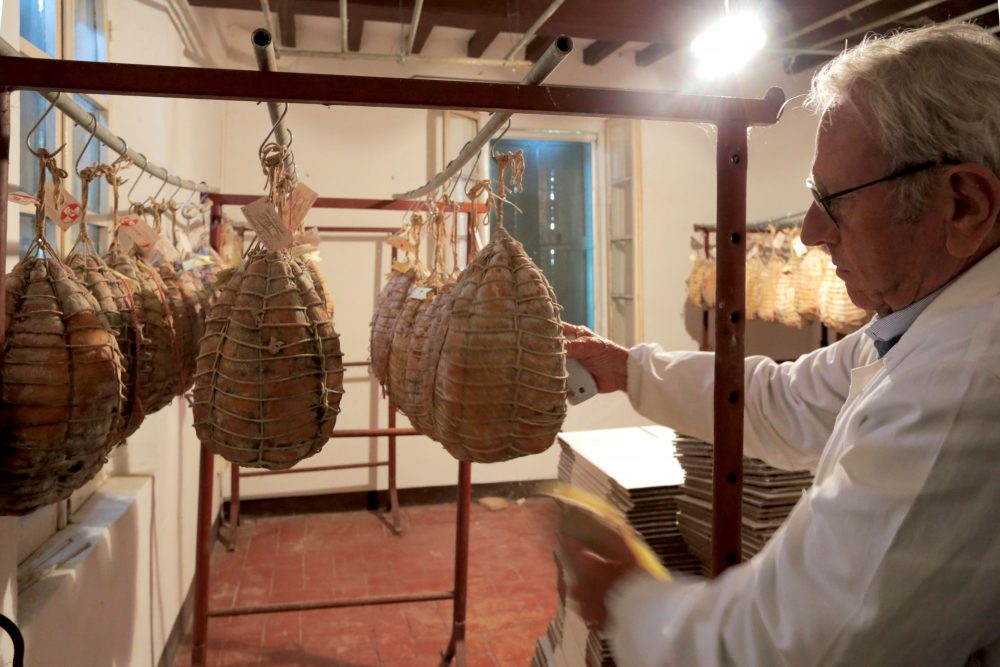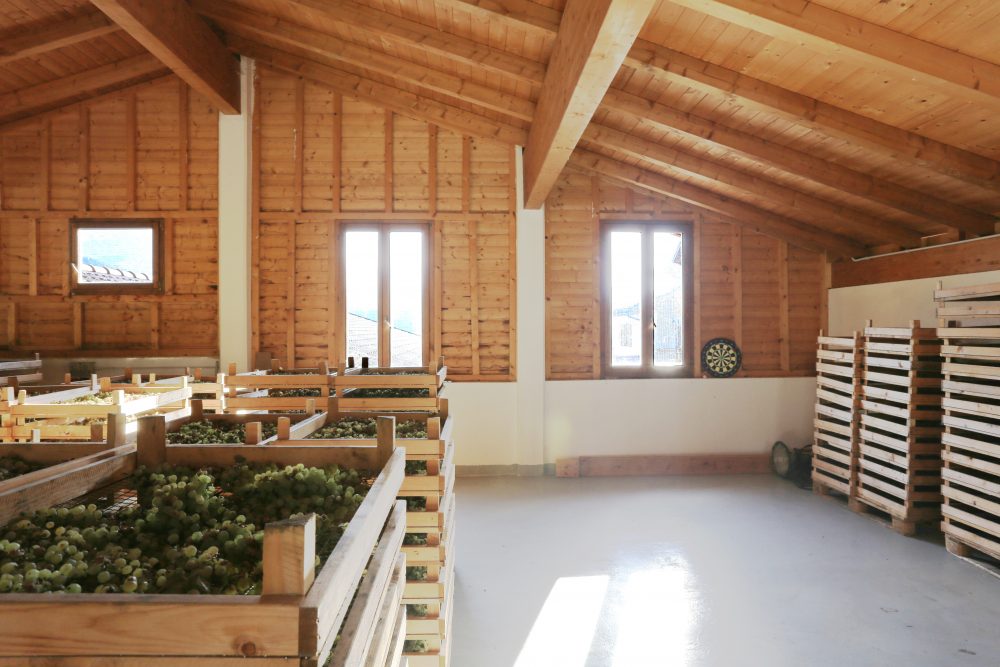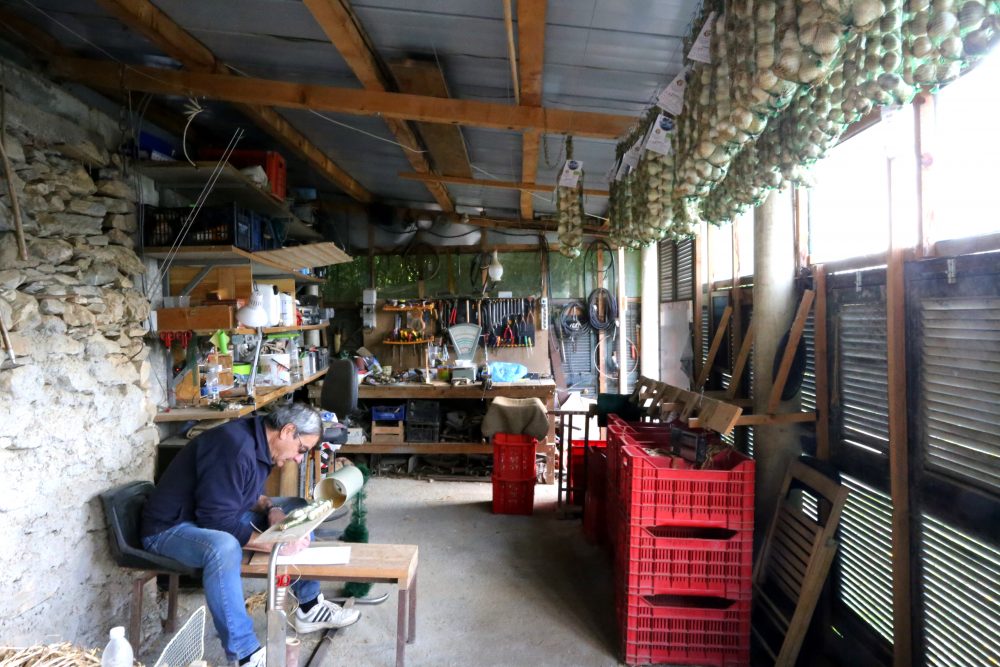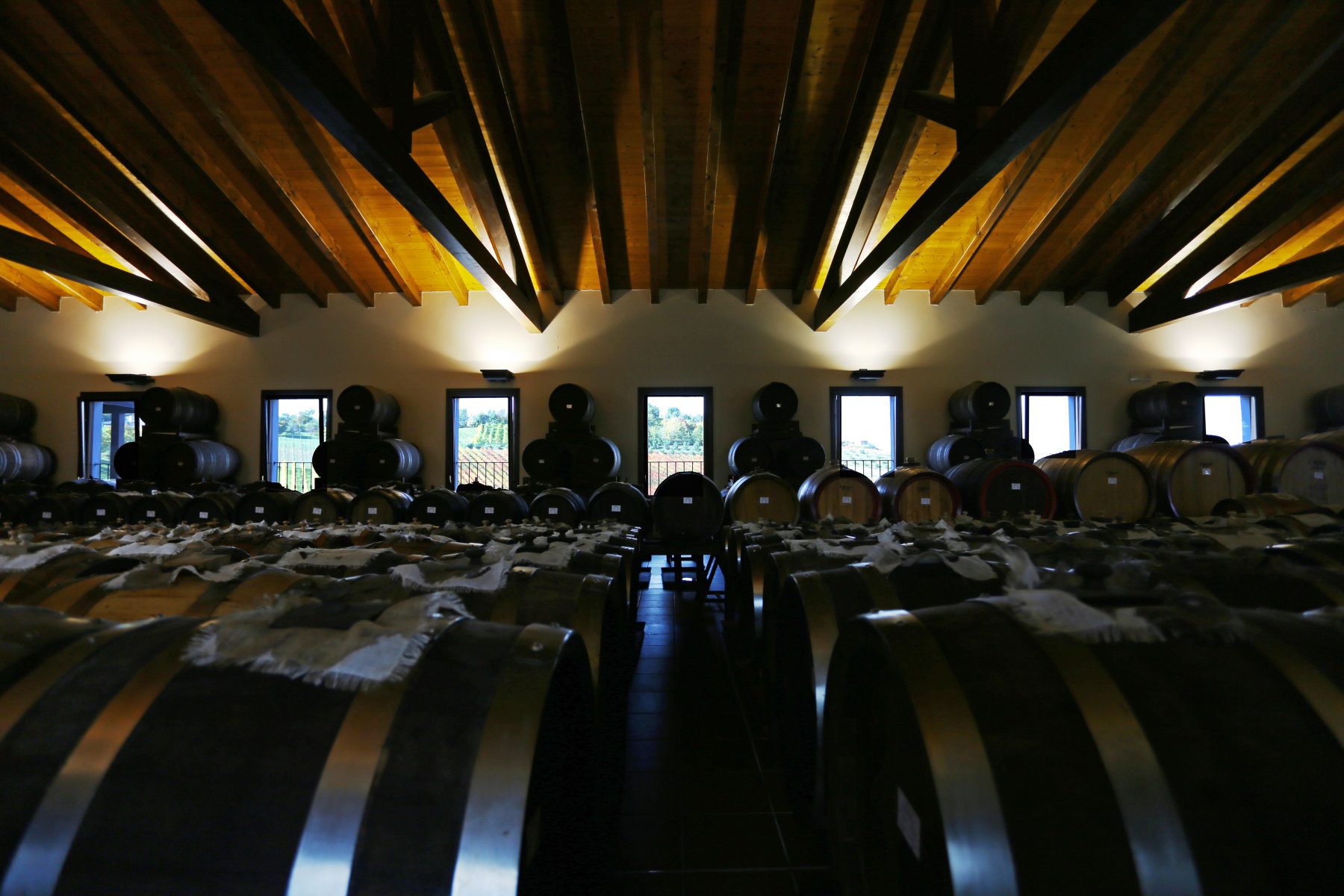
“Traditional” Balsamic Vinegar in Modena, Northern Italy
14 Jan 2020
Among fruit vinegars made from grapes, a balsamic vinegar is an essential seasoning for Italian cuisine. In the city of Modena in northern Italy, it has been used as an anti-fatigue and digestive medicine among nobility and emperors since the Middle Ages. The reason why Modena is said to be the birthplace of balsamic vinegar is because the region’s soil, topography and climatic conditions are ideal for grapes (varieties: Lambrusco, Torrebiano, Ancerotta) and the annual temperature in Modena is ideal for aging balsamic vinegar.
In this article, I will refer to balsamic vinegar in Modena as “traditional” balsamic vinegar, distinguishing it from ordinary balsamic vinegar. The difference is in its production method. Ordinary balsamic vinegar that you usually see at supermarkets is made by adding wine vinegar*, coloring, flavoring, caramel, etc, after having fermented it with acetic acid in wooden barrels for 3 to 4 years. “Traditional” balsamic vinegar does not have added ingredients, and is produced by aging in wooden barrels for over 10 years.
The “Acetair Sereni” brewery produces balsamic vinegar in this way. In order to get to the distillery, one has to go up and down the many hills scattered around the base of the Apennine Mountains, as if sewing them together. I visited the brewery around October, just when the vineyards were beginning to change color with the autumn leaves.
-
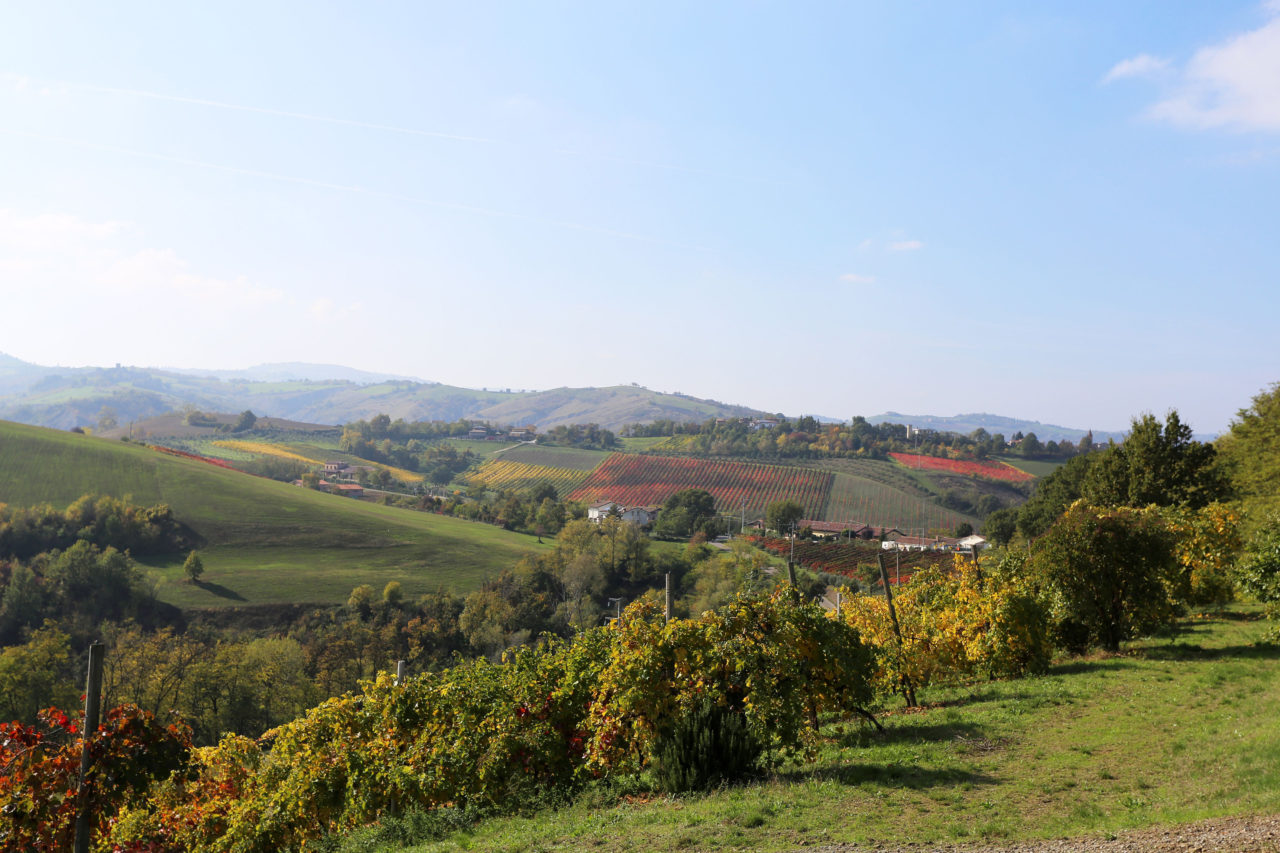
The hilly area of Modena colored red and yellow
When one looks at the landscape of the hilly area, one will notice that red and yellow leaves each cover about half of the field. This is because two types of grapes, white and red (called “Treviano” and “Lambrusco” respectively), are grown. Different varieties of grape trees turn different colors. The reason why the cultivated area of each hilly area is the same for different varieties is to make the most of the amount of sunlight and the topographical conditions as possible. Balsamic vinegar is made by mixing these grapes at a ratio of 1:1.
After driving about 20 minutes south from Modena and arriving at the brewery, I was greeted by the producer, Francesco Luigi. Francesco took over this brewery from his great-grandfather, who opened the brewery in the early 20th century. He still brews balsamic vinegar with his father, using the original manufacturing method. In order to let many people know about the 1500 wooden barrels and traditional production techniques handed down from their predecessor, they have incorporated “agri-turismo” (farm tourism) and are providing study trips and balsamic vinegar for meals. In addition, they are actively exporting their products overseas.
-

The brewery located on a slope
The brewery is located on a slope, and as one passes through the second floor entrance, an aging room stands at the front of the building. On the first floor below, there is a pressing machine for harvested grapes, a machine for mixing grapes, and a stainless steel barrel for alcoholic fermentation, easily accessible from the vineyard.
The process begins on the first floor with the mixing of the two varieties of grapes, which are harvested around mid-October. They are then squeezed and boiled. The grapes are temporarily fermented with alcohol in a stainless steel barrel, after which only the “traditional” balsamic vinegar without added ingredients is moved to the second-floor aging room.
After alcoholic fermentation comes the process for acetic acid fermentation. In the second floor aging room, a number of wooden barrels are lined up by size under the wooden structure of the roof. When summer comes, the grapes are first placed in the largest barrel, and then the fermentation proceeds in sequence, all the while moving the barrels themselves. For typical balsamic vinegar, fermentation is completed in one day using a machine, but with the “traditional” balsamic vinegar, aerobic bacteria and acetic acid bacteria gradually react with the air coming through the lid of the wooden barrel and it ferments slowly and naturally over 80-120 days.
-
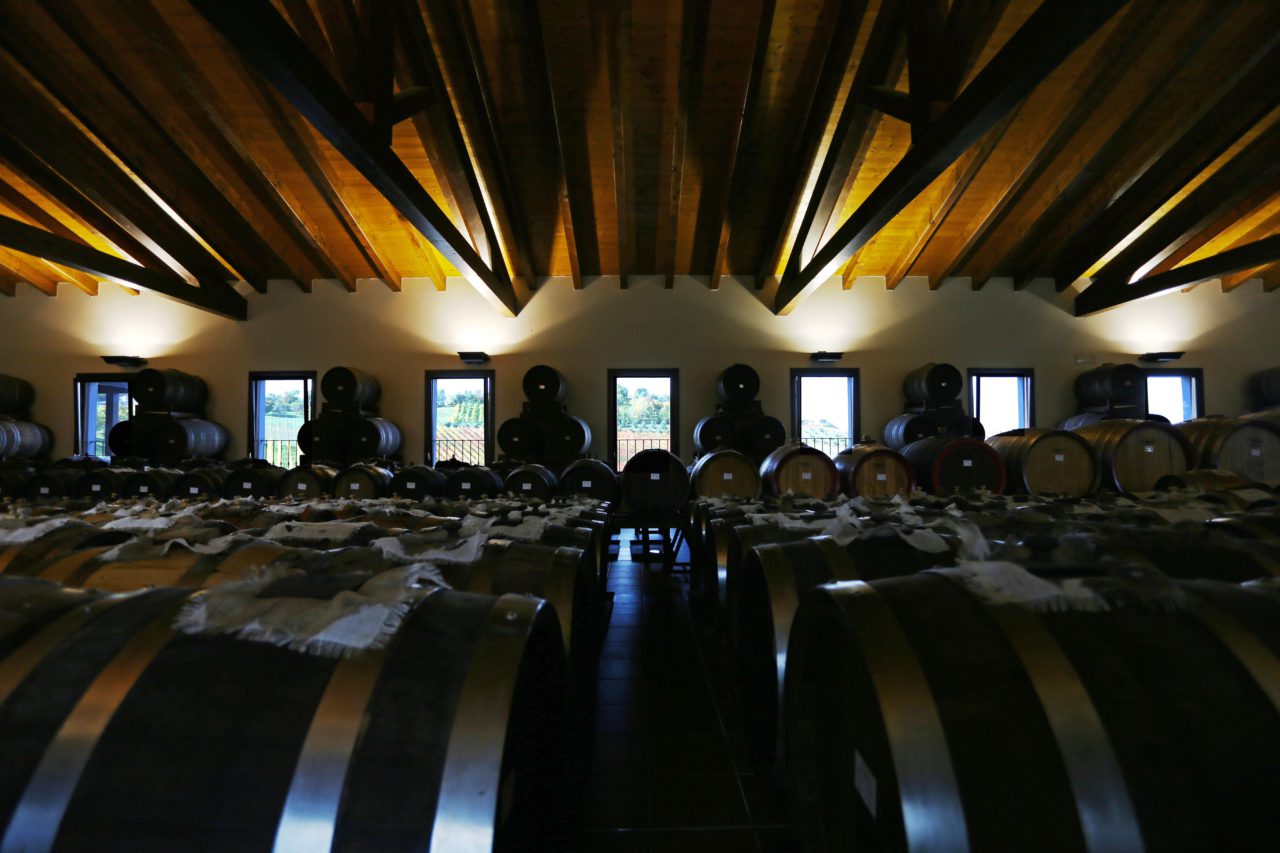
Aging room on the second floor; many barrels are lined up by size
Because the barrels are moved one after another, the barrels for fermenting balsamic vinegar have no tap, as do wine barrels. Instead, grape juice is taken out and put in through a circular hole carved into the top of the barrel. During summer, this is exposed to air, resulting in the evaporation of 5% of the grape juice. This promotes the fermentation and aging process.
Over the next year, another 5% of the fermented grape juice is transferred to the next wooden barrel. In this way, the fruit juice is aged slowly while moving through several barrels one after another during the winter. A variety of tree species, such as mulberry, cocoon, juniper, robinia, cherry, chestnut are used for the barrels. Winter is the season for rest and ripening of balsamic vinegar. At the same time, however, it is an important time for the various woody aromas to be transferred from the wooden barrels to the fruit juice. By using barrels made of different species of wood over a long fermentation period, high-quality balsamic vinegar with complex, mixed aromas can be produced.
-

Luigi, discussing the importance and effort of making "traditional" balsamic vinegar
Luigi talks about the process, saying, “the balsamic vinegar is thus aged by transferring the grape juice to a small barrel little by little every year. So, the number of barrels listed here is also the number of years the grape juice has been aged. ʻTraditional’ balsamic vinegar requires aging for at least 12 years.”
The window plays an important role in the fermentation and aging process. Observing the area around the windows, one can see that the wall of the aging room is lined with hopper windows open at the top. Modena experiences significant temperature differences, average 31°C in summer and 0°C in winter. “The windows are open all year round in order to bring the constantly changing outside temperatures closer to the temperature of the aging room,” Luigi explains.
-
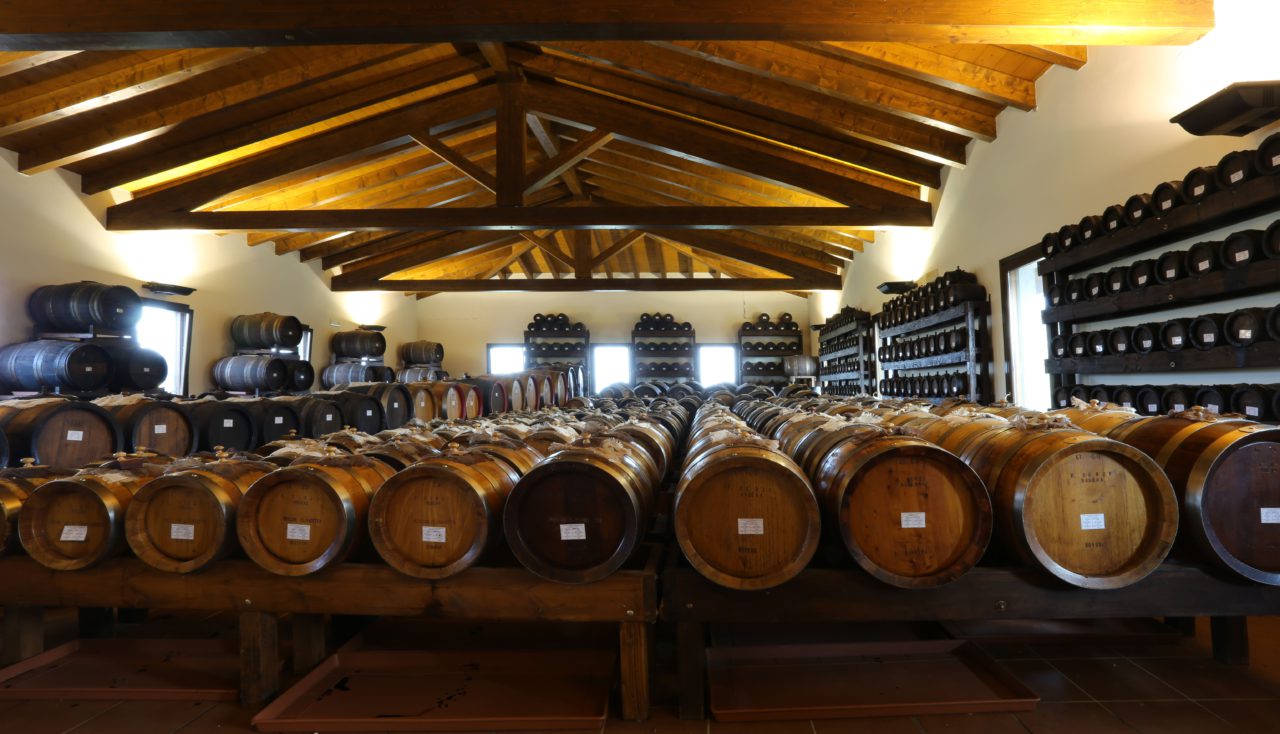
The aging room with open hopper windows
-
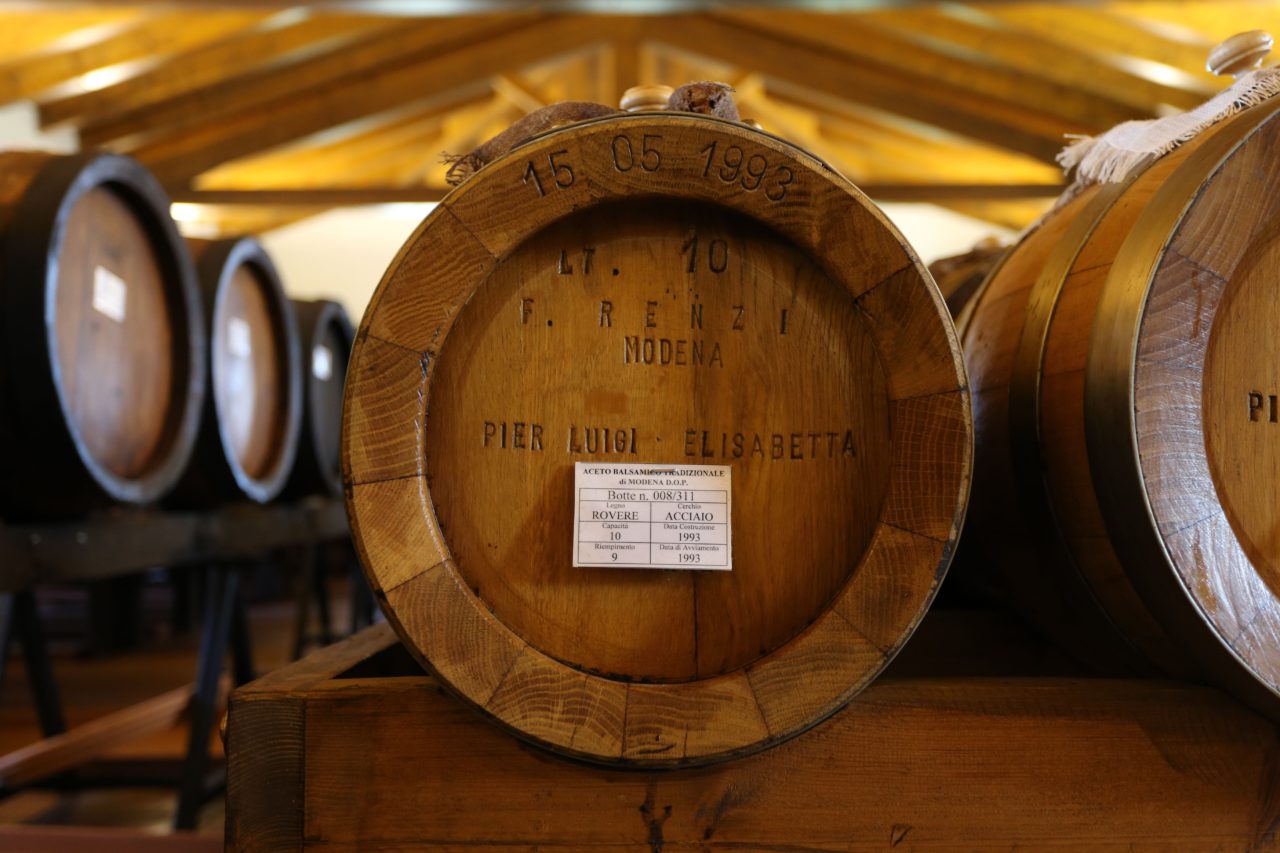
An oak wood barrel rom 1993
By keeping the windows open, the process undergoes fermentation and evaporation by heat in the summer, and resting and aging with cold in the winter. Through this process, the producers are taking advantage of the changes in microorganisms that occur inside the barrel. Unlike cheese, wine and prosciutto, where it is ideal to maintain a constant temperature and humidity for aging, Modena balsamic vinegar is aged using seasonally changing temperatures.
By utilizing the changes in temperature through the open windows, the region’s unique balsamic vinegar is made. The longest cases take as long as 25 years, after which the “traditional” balsamic vinegar is put into a special container indicating that it is from Modena.
-
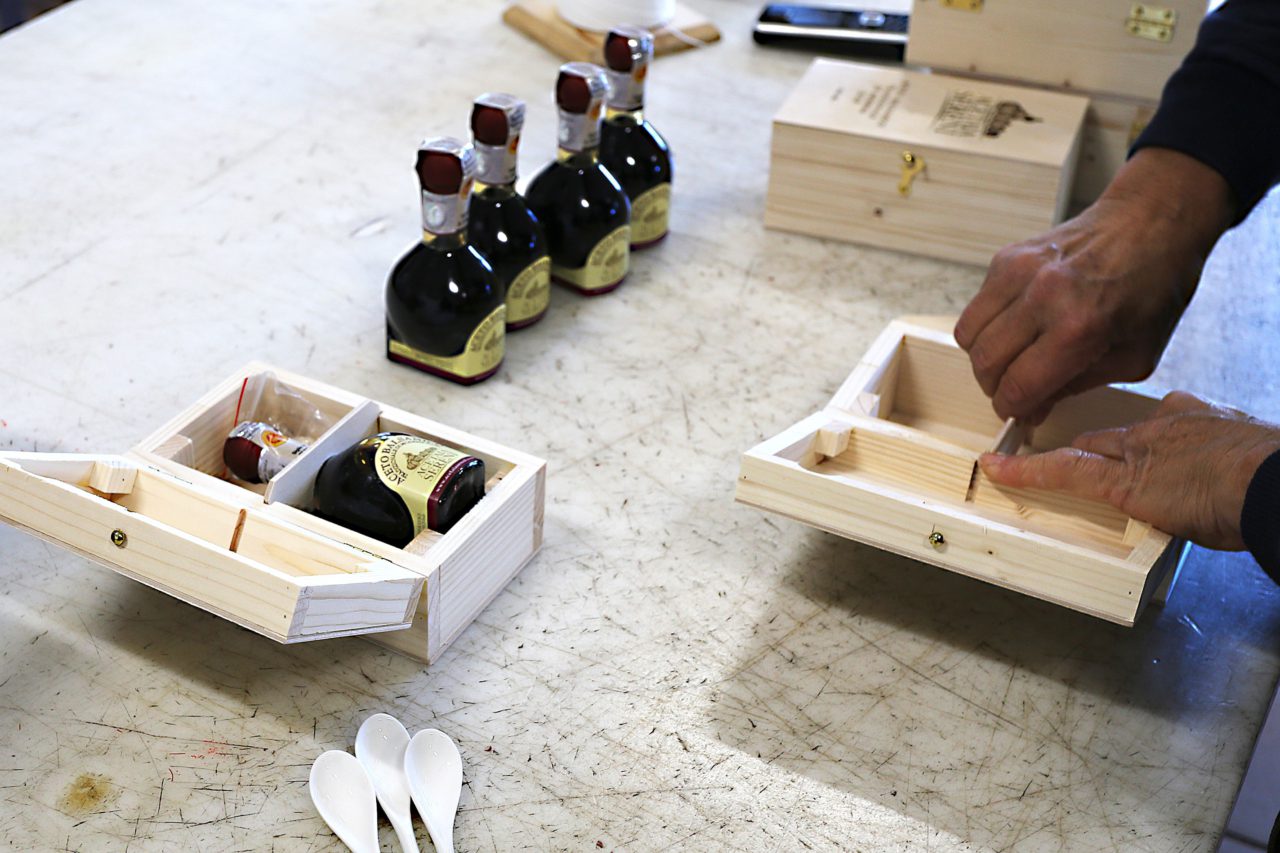
The bottle which is used only for "Traditional" Balsamic Vinegar in Modena.
Balsamic vinegar is a brilliant dark brown, and when you open the cap, it has a rich and unique smell. In Modena, not only is it applied to salad and crushed Parmajano Reggiano cheese (this cheese is also a specialty of Modena), but it is also common to eat only vinegar in small spoonsful.
I imagined Japanese vinegar as I tasted the balsamic vinegar in my mouth, and was surprised by the fresh sweet and sourness of the grape juice. The complex fragrance of wood, which has undergone a long aging period in the rich nature of Modena, remained in my mouth.
notes
*Wine vinegar: fruit vinegar made from grape is also wine vinegar, but wine vinegar is made by adding yeast to grape juice and fermenting alcohol, then adding acetic acid bacteria and acetic acid fermentation for about 3 months. Balsamic vinegar is then made by aging for a longer period of time.
“ʻTraditional’ Balsamic Vinegar in Modena” production process
-
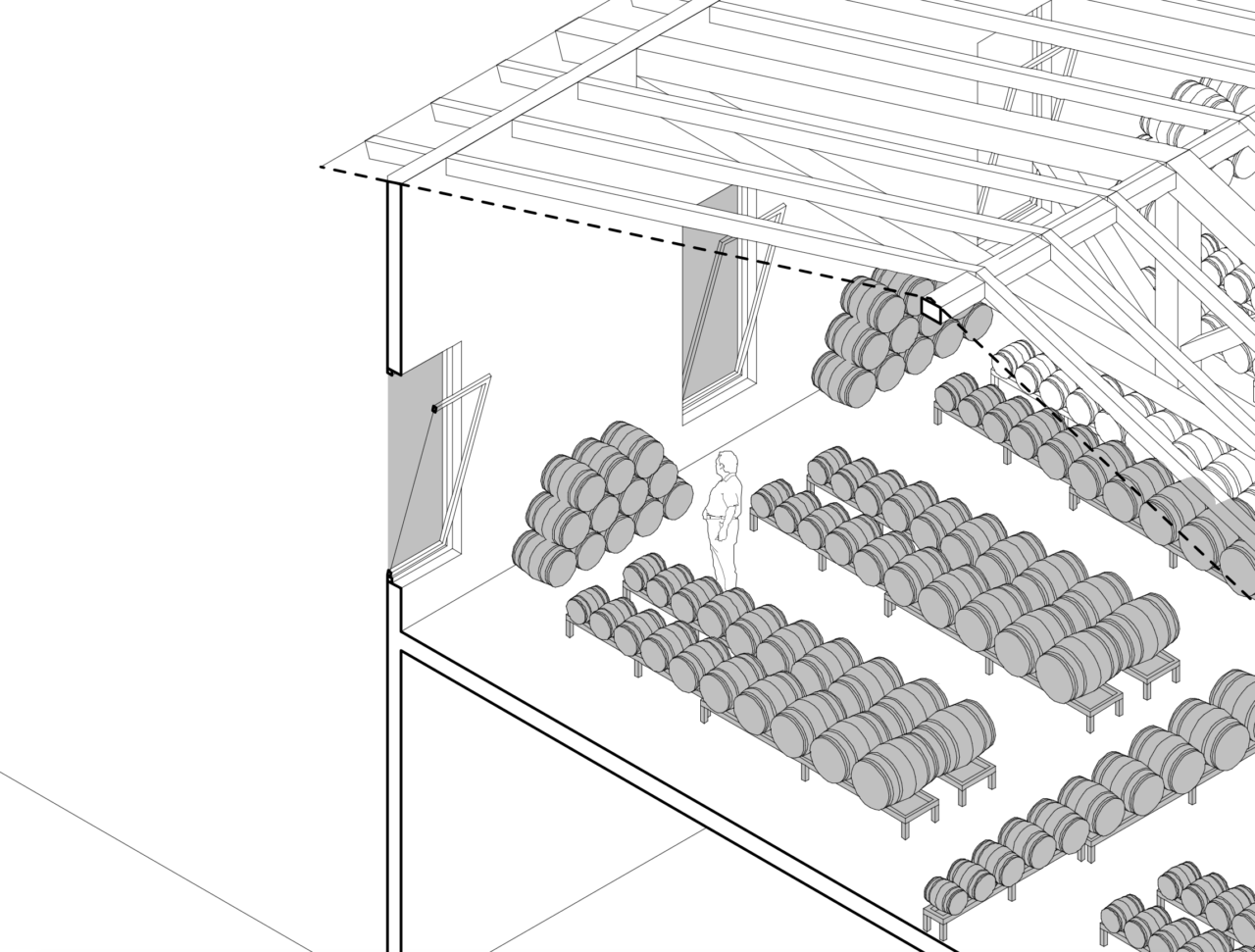
Isometric Drawing of the Second Floor Aging Room
-
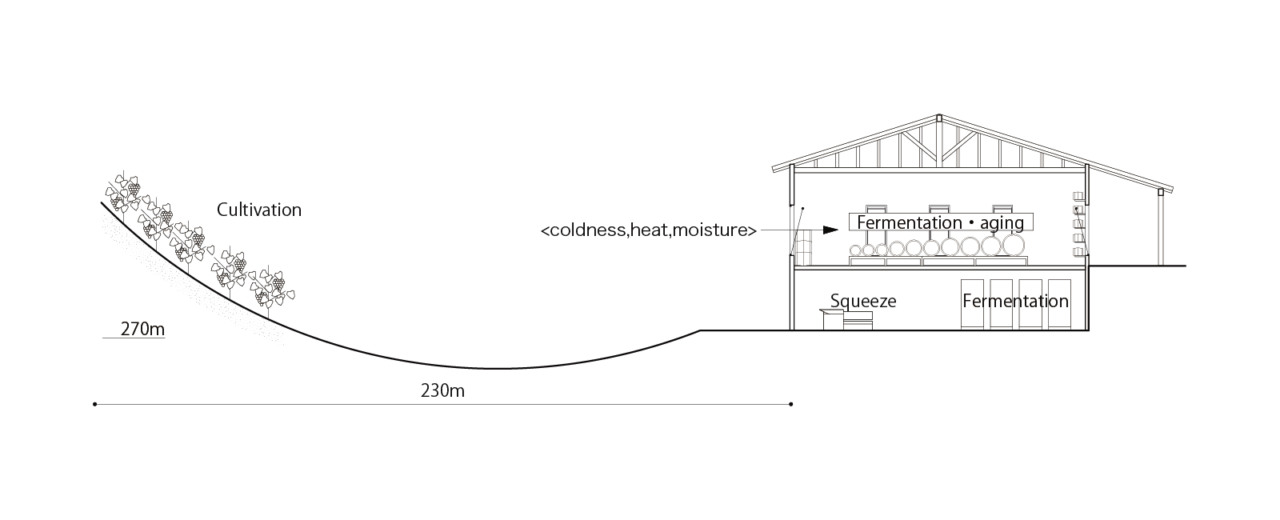
Site Section Drawing
Balsamic vinegar is produced in mid-September when two grapes, Trebiano and Lambrusco, can be harvested. These grapes are squeezed and mixed in a 1:1 ratio for alcoholic fermentation. This mixture is then moved to an aging room with a high ceiling located on the second floor of the brewery. The aging process is carried out while sequentially moving through wooden barrels every year. In the aging room, hopper windows are opened year-round to utilize the changes in Modena temperature for aging. In this way, fermentation and evaporation by heat are performed in summer, and aging by cold air in winter, and the traditional balsamic vinegar is completed over 10 years.
Tomoki Shoda
Born in Chiba Prefecture in 1990. Since his father transferred to many counties, he had lived in many places such as France, Indonesia, China and Belgium. Researched about traditional workshops in Japan for “WindowScape3 -working window” in Yoshiharu Tsukamoto Laboratory at the Tokyo Institute of Technology from 2014 to 2015. Studied abroad in Politecnico di Milano from 2016 to 2017. Researched about Italian Traditional food registered by Slow Food from the perspective of architecture. Graduated master course in Tokyo Institute of Technology in 2017. Researched Japanese Traditional food production as Slow Food Nippon researcher from 2017 to 2018. He has been in Takenaka corporation design team from 2018 to present.

